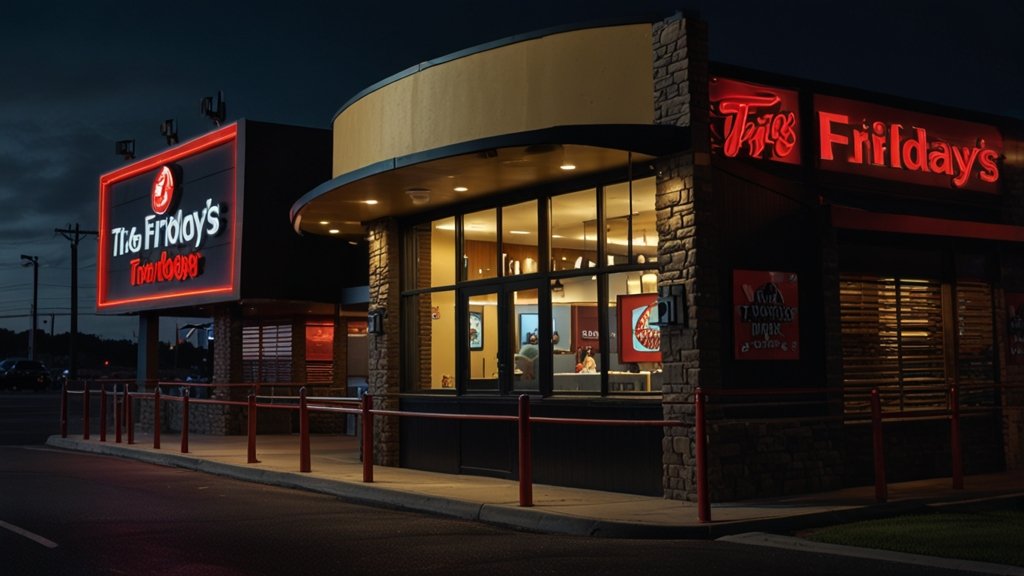Picture this: you’re craving endless shrimp or loaded potato skins, but when you pull up to your go-to spot, the lights are off. The sign reads, “Closed Permanently.” This scene played out hundreds of times across America in 2024–2025, as red lobster tgi fridays closing headlines signaled a seismic shift in casual dining. These iconic chains shuttered over 230 locations combined—not just bad luck, but a survival tactic in an industry fighting for relevance. Let’s explore.
Why Casual Dining Giants Are Retreating
For decades, chains like Red Lobster and TGI Fridays dominated suburbs with hearty portions and festive vibes. But rising rents, labor costs, and finicky diners forced a reckoning. Consider the stats:
- Red Lobster closed 50+ locations in mid-2024 to free up cash after years of losses.
- TGI Fridays filed Chapter 11 bankruptcy in November 2024, shedding 180+ restaurants by April 2025.
The message? Bloated footprints became anchors, not assets.
Inside Red Lobster’s Fight for Survival
Facing $1.1 billion in debt, Red Lobster’s 2024 closures were triage. Leases on underperforming stores—many in declining malls—drained resources. Worse, their famous $20 Endless Shrimp deal backfired, costing $11 million in one quarter. As CEO Jonathan Tibus stated, the chain must now “simplify operations and refocus on core markets.” Translation: fewer locations, sharper menus.
TGI Fridays’ Bankruptcy Bombshell
TGI Fridays’ downfall was years in the making. Private equity ownership loaded it with debt, while outdated décor and inconsistent food drove diners away. Their Chapter 11 filing aimed to shed unprofitable stores fast. By April 2025, just 85 corporate-owned U.S. locations remained—a stark drop from 265 in 2023. Franchised stores fared better, hinting at a future where licensing trumps ownership.
Comparing the Casual Dining Collapse:
| Metric | Red Lobster (2024) | TGI Fridays (2024–2025) |
|---|---|---|
| Closures Announced | 50+ | 180+ |
| Trigger | Liquidity crisis | Chapter 11 bankruptcy |
| Surviving U.S. Units | ~550 (est.) | ~85 corporate-owned |
| Biggest Challenge | Over-leveraged; menu missteps | Debt burden; relevance |
| Reboot Strategy | Lease exits; menu innovation | Franchising focus; tech upgrades |
Also Read: Velugu ePaper: Your Digital Morning Ritual for Authentic Telugu News
Why Your Favorite Chains Are Vanishing
Three pressures squeezed casual dining:
- The Value Trap: Diners now demand quality and affordability. Fast-casual spots like Chipotle won on both.
- $20/Hour Reality: Soaring wages in states like California forced painful cuts.
- Delivery Dilemma: Third-party apps ate profits—yet skipping them meant losing sales.
As industry vet Brian Vaccaro told Nation’s Restaurant News, “Chains built for 1995 can’t thrive in 2025 without radical change.”
The Human Cost: Ghost Kitchens & Ghost Towns
Beyond balance sheets, closures devastated communities. When a Fridays shutters in Ohio, 30+ jobs vanish overnight. Employees like Maria Rodriguez (a 10-year veteran) shared: “We were family. Now we’re scrambling.” Meanwhile, mall landlords scramble to fill 15,000 sq. ft. voids—a nearly impossible task.
The Phoenix Strategy: How Chains Are Adapting
Survivors aren’t waiting for fate. Red Lobster tests kiosk ordering and premium dishes like lobster tacos. Fridays leans into franchising and virtual brands (like “Conviction Chicken” delivery-only wings). Applebee’s and Chili’s—also trimming stores—invested in remodels and app-based loyalty programs. The goal? Be smaller, nimbler, and digitally savvy.
What This Means for You, the Diner
- Fewer Locations: Drive farther for cheddar bay biscuits or Jack Daniel’s glaze.
- More Deals (But Less Value): Expect promotions, but portion cuts may follow.
- Tech Takeover: QR code menus and app discounts are now table stakes.
- Local Wins: As chains retreat, indie eateries gain ground with unique experiences.
The Future of Friday Night Feasts
Casual dining isn’t dead—it’s evolving. Chains that master off-premise sales (takeout, delivery), streamline menus, and create Instagram-worthy moments will endure. For Red Lobster and TGI Fridays, the red lobster tgi fridays closing wave was a brutal but necessary reset. As for diners? You’ll trade nostalgia for efficiency, but the mozzarella sticks will live on.
You May Also Read: Birthday Wishes in Marathi: Weaving Tradition into Every Heartfelt Word
FAQs
Why did Red Lobster close so many locations?
Debt, high lease costs, and operational missteps (like the Endless Shrimp debacle) forced closures to preserve cash.
Is TGI Fridays going out of business completely?
No. After Chapter 11, it operates ~85 corporate stores and hundreds of franchises globally.
Will more chains close restaurants in 2025?
Yes. Applebee’s, Chili’s, and Outback have all announced targeted closures to boost profitability.
How can I support my local Red Lobster or Fridays?
Order takeout directly (bypass apps to help their margins), join loyalty programs, and give feedback on new dishes.
Are gift cards from closed locations still valid?
Typically, yes—redeemable at surviving stores. Contact corporate for specifics.
Did COVID cause these closures?
Indirectly. It accelerated trends like delivery and value-seeking, but underlying issues were pre-existing.
What chains are thriving despite the shake-up?
Texas Roadhouse, First Watch, and fast-casual concepts like Sweetgreen are gaining share through innovation.










